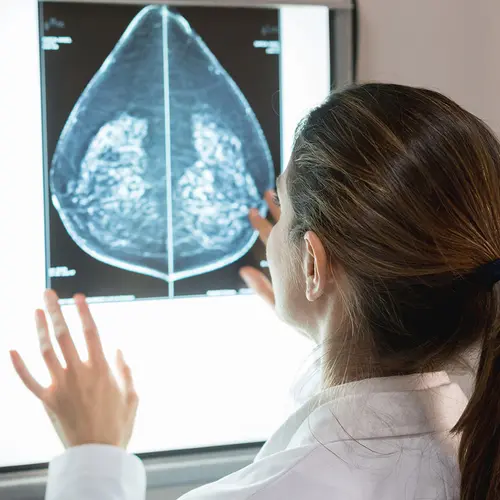Anyone who has gone through breast cancer treatment has probably thought at some point: Is the disease gone for good?
Fortunately, most breast cancers don’t return. But there are exceptions.
When it comes back, or recurs, it can happen in the same breast or close by, in lymph nodes in the same general area, or further away in the body, such as in the bones or lungs.
Doctors check on things that make recurrence more likely. Those tests start when you first find out you have breast cancer, because the results can affect which treatment your doctor recommends.
“We can’t predict recurrence with 100% certainty, but we can predict it with a substantially greater probability that we ever could have before,” says Dennis Sgroi, MD, co-director of breast pathology at Massachusetts General Hospital in Boston.
He points to major advances in the last 10 years, especially with breast cancer that’s sensitive to estrogen (or, as doctors call it, estrogen-receptor positive).
What Your Doctor Will Check
They'll consider certain details about you, like your age and whether you’re in menopause. They'll also check into things about your breast cancer, such as the size of the tumor and whether it has spread.
The goal is to stop the high-risk cancers before they come back, says Elizabeth Anne Comen, MD, a medical oncologist at Memorial Sloan Kettering Cancer Center in New York. She treats people with breast cancer.
“In general, the larger a tumor is and the more lymph nodes involved, the higher the risk of recurrence,” Comen says. “The biology of the cancer itself is important too -- specifically, what unique receptors are found in the breast cancer.”
For example, triple-negative breast cancers -- those without the estrogen receptor, progesterone receptor, or HER2 receptor -- can be more likely to come back.
After your oncologist goes through that information, they might order a test to get more info. That’s particularly true if the tumor has already grown considerably or spread. In these cases, the risk of recurrence is in a “grey zone,” Sgroi says, which means it’s hard to predict what will happen.
There are several of these tests. But they don’t work for every type of breast cancer.
Oncotype DX is most commonly used in the U.S. It measures the levels of 21 genes in a sample of tumor tissue. Based on how the genes act, the results show a “Recurrence Score” between 0 and 100, which tells doctors not only the risk of recurrence in the first 5 years but also whether or not that person would benefit from chemotherapy. The test only works on tumors that are sensitive to estrogen (estrogen-receptor positive) and not in the lymph nodes.
Also, the MammaPrint tests for estrogen-receptor-positive or negative cancers at the time of diagnosis. The Breast Cancer Index, Pam50, and EndoPredict gauge the chance of recurrence in women with estrogen-sensitive tumors after five years.
On the Horizon: Blood Tests
Researchers at the Translational Genomics Research Institute (TGen) are working toward making a blood-based test to help identify breast cancers that are likely to recur.
A test like this would be useful after the treatment is done, and there isn’t any tumor tissue left to test.
“If we can precisely determine who will recur, we can determine which women might need additional therapy, and then we can move quickly toward developing trials to test those new therapies,” says Bodour Salhia, PhD, assistant professor in the integrated cancer genomics division at TGen.
“Ultimately, our goal is to prevent metastatic breast cancer, which remains difficult to manage and is associated with more than 90% of breast cancer deaths.”
It may take several years to develop a blood test that doctors can use, Salhia says.
What You Can Do
While scientists work toward better tests, your everyday habits may make a difference. For instance, you can exercise and stay at a healthy weight to help lower your odds of a recurrence, Comen says.
It’s also important to work with your doctor to fully understand what your risk is and what that means. Keep in mind that the risk of cancer coming back is different from survival rates. For example, a woman who finds out they have breast cancer, goes through treatment, and then has a recurrence 2 years after their original diagnosis may still go on to live for decades, if the recurrence is found early.
So keep up with all your follow-up appointments -- and if you have questions or concerns, ask.
“Doctor-patient communication with respect to understanding one’s individual risk of recurrence is key to helping patients make informed decisions about their treatment,” Comen says. “Dealing with a breast cancer diagnosis can be very confusing and scary for patients. It’s essential that they feel able to talk to their doctors about their fears.”

